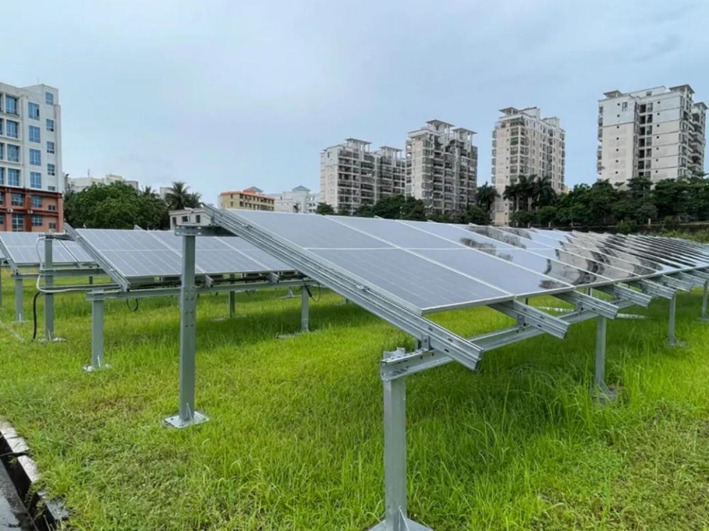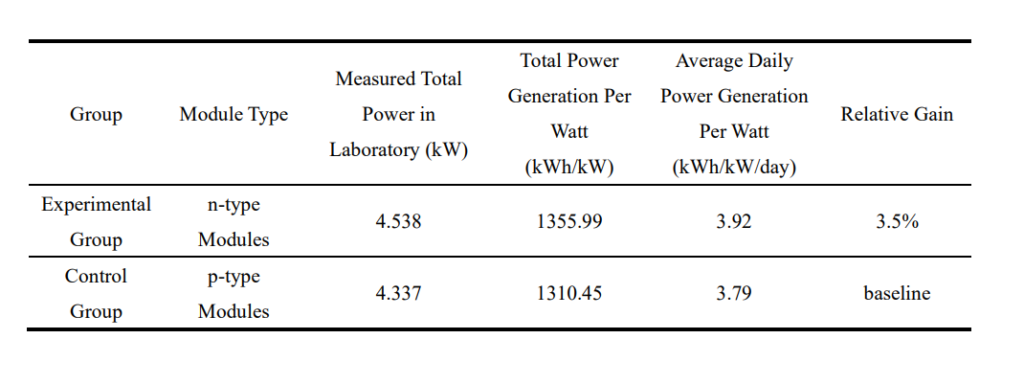Situated within the national PV product outdoor testing base in Qionghai City, Hainan Province, the year-long field test provided compelling evidence of JA Solar’s innovative n-type bifacial PV modules thriving in demanding climates. Hainan, known for its tropical monsoon climate, with an average annual temperature of approximately 24°C and yearly rainfall reaching around 2,100 millimeters, is a region known to pose significant challenges for solar technology.
Project Background
N-type modules have increasingly become mainstream due to their numerous advantages such as high power, high efficiency, high electricity generation capability and high reliability. Assessing module performance in various environments is crucial, with JA Solar collaborating with TÜV Rheinland to test the power generation performance of its n-type products. Following their successful performance in Yinchuan’s arid and hot climate, this comparison project was conducted in the hot and humid environment of Hainan Province. To ensure accuracy, the project maintained consistent installation methods and system configurations across different module types and, to gather comprehensive seasonal data, a full year of empirical data was analyzed from February 2023 to January 2024.
Project Overview

The field test installed a set of DeepBlue 4.0 series n-type bifacial modules (with Bycium+ cell based on n-type passivated contact technology, hereinafter referred to as n-type modules) and a set of PERC bifacial modules (hereinafter referred to as p-type modules), each with an installed capacity of some 5 kW (measured power in the on-site laboratory), and each connected to one 6 kW string inverter. The project used a fixed mounting structure (tilt angle of 19°), with the long side of the modules fixed on vertical purlins to ensure unobstructed backsides. The modules were mounted at a height of about 1 meter above ground level. In addition to configuring site-level environmental monitoring stations, the site also included monitoring equipment such as high-precision DC meters, module-level temperature sensors and high-precision pyranometers.
In terms of system design and analysis of module power generation performance, to eliminate the influence of inverters on the performance of different types of modules and ensure more accurate data, DC meter data is directly utilized and subjected to normalization processing.
Comparison of Power Generation Performance
During the operation period from February 2023 to January 2024, the overall power generation performance of n-type modules and p-type modules at the empirical power station is summarized in Table 1. The comparison of power generation per watt and gain between the two types of module is illustrated in Figure 2.

A PV module’s power generation capability primarily depends on characteristics such as power degradation rate, high-temperature performance, bifacial rate and low irradiance performance. In this field test, both n-type and p-type modules adopted the same encapsulation form (half-cut cells, double-glass structure), with the difference in yield gain mainly attributed to distinct cell technologies.

Summary
Following the one-year field test at the Hainan test base, JA Solar’s n-type modules have proven their superiority, delivering a remarkable 3.5% increase in power generation per watt over p-type equivalents, underlining the outstanding performance of the company’s DeepBlue 4.0 series modules in real-world scenarios.

